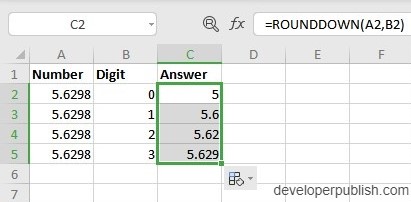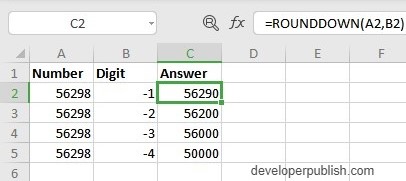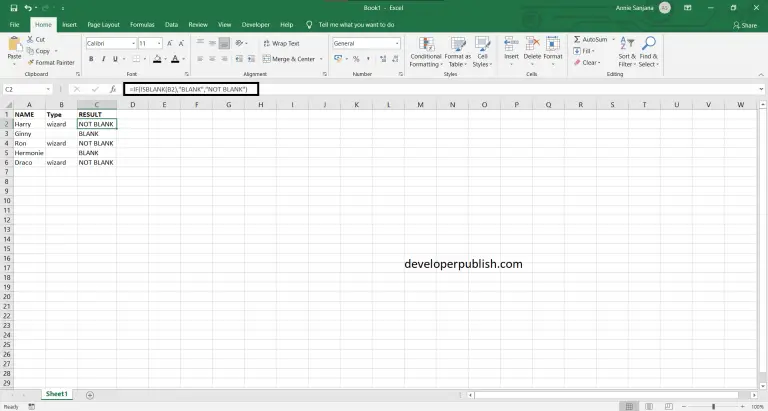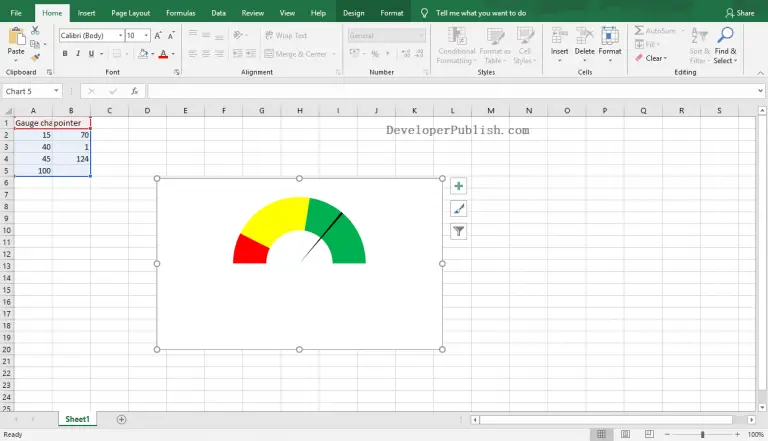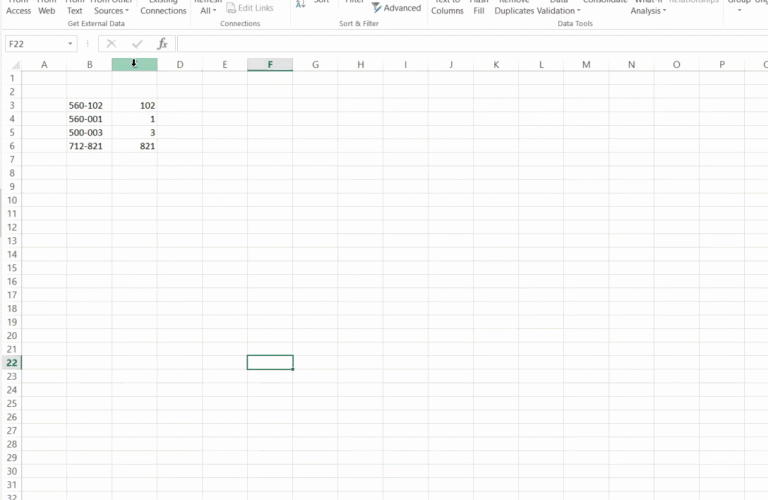In this post, you will learn about the ROUNDDOWN Function in Excel, how to use it in – with the excel spreadsheets.
This function is similar to the Round function, but this function rounds down the number to the given number of integers.
Syntax
=ROUNDDOWN(number, num_digit)
This syntax has two arguments
- number – This holds the number to be round down
- num_digit – This holds the number of digits that you want to round off the number.
How does the ROUNDDOWN Function work?
- The function is mostly used when working with decimal numbers.
- To start with, enter the numbers and the value of the second argument in the excel sheet. In a new cell enter the syntax and highlight the cells to insert them in the syntax.
- Press enter to display the answer and use the fill handle to apply the function to the rest of the data.
- To round off the number towards the decimal point, use positive numbers in the num_digit argument. For example
=ROUND(a, 1) rounds up the number to 1 number after the decimal point
=ROUND(b, 2) rounds up the number to 2 numbers after the decimal point
- Negative numbers are used in the num_digit argument to round down the number towards a whole number. For example
=ROUND(a, -1) rounds up the number to the nearest 10.
=ROUND(b, -2)rounds up the number to the nearest 100.
Additional Points
- The syntax does not accept non – numeric values and returns an error.
- This function is one of the different Rounding functions in Excel.
- If the number is already round off the function does not take place.


